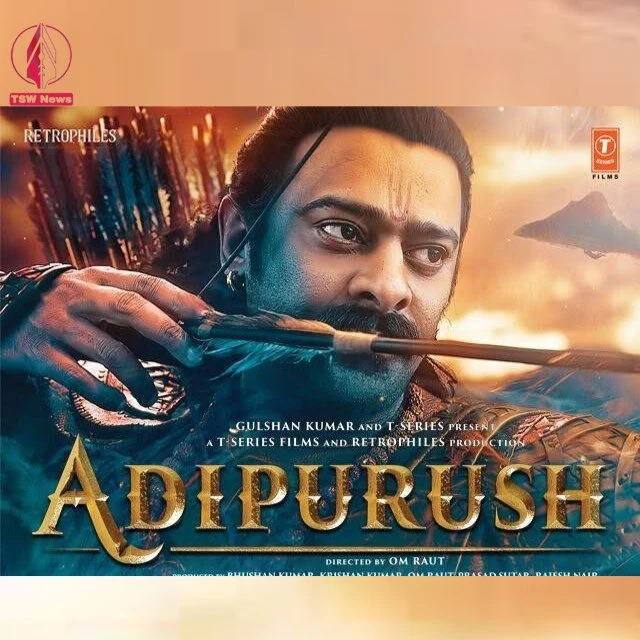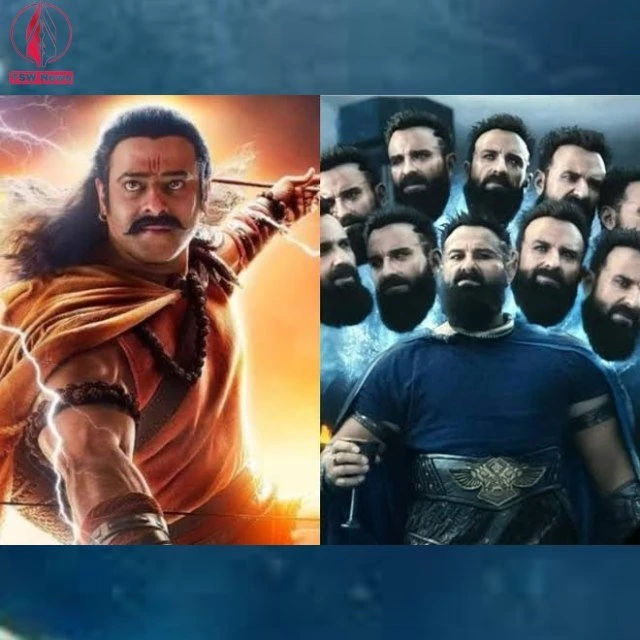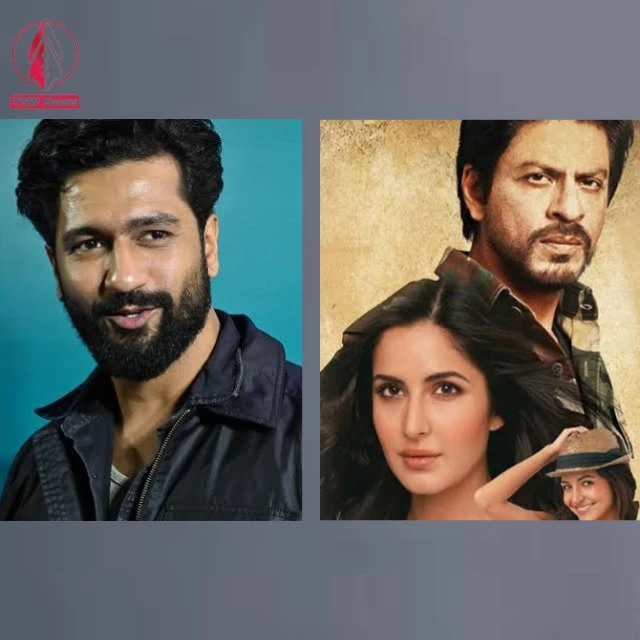Adipurush Movie Review: Prabhas Takes on Ramayan, but Falls Short on Emotional Depth !
- Posted on June 16, 2023
- Enterntainment
- By Navya Shrivastava
- 489 Views

In the opening moments of 'Adipurush' unfold, we are
greeted by the sight of Raavan, his head thrown back in laughter. With each
step he takes through the snow, his shoulders sway, one rising while the other
dips, resembling a character straight out of a cartoon. The echoes of his
resounding ha-ha-ha-ha fill the air, a laugh known in Bollywood as the
villain's 'thahaka.' This distinct laughter has been delivered by every noteworthy
antagonist, from KN Singh to Amrish
Puri.
And now, we witness Saif Ali
Khan's portrayal of Lankesh, effortlessly tossing off that very same laugh. It
serves as a telling sign that Om Raut's interpretation of the epic 'Ramayana'
will be a procession of cumbersome computer-generated imagery, steeped in the
vibrant language of Bollywood. And indeed, that is precisely what awaits us in
this nearly three-hour-long cinematic experience.
As the film unfolds, we find ourselves immersed in the wilderness where Ram, Sita, and Lakshman have already embarked upon their arduous journey, with the noble Ram willingly embracing his 'vanvas' or exile. Swiftly, we are introduced to the tale of Sooparnakha, Raavan's sister whose advances towards Ram are met with a swift and definitive action as he slashes her nose. Next, we encounter the poignant story of Shabari, an elderly woman whose cherished 'jhoothe ber' are gratefully devoured by Ram, showcasing his humility. Furthermore, we witness the pivotal moment when Sita, unaware of the consequences, steps over the sacred boundary of the Lakshman rekha, resulting in her immediate abduction by the menacing Raavan.

What ensues is an unrelenting
barrage of the rescue mission, where Ram and his loyal comrades tirelessly
strive to retrieve Sita from the clutches of evil. Along this treacherous path,
they encounter the mighty Pavan Putra Hanuman, whose extraordinary meeting with
Ram adds depth to their endeavor. The creation of the magnificent Ram Setu, a
bridge that spans the distance between hope and victory, becomes an integral
part of their journey. The 'vaanar sena' or army of brave monkeys unites,
forming a formidable force against Raavan and his accomplices. Finally, the
climactic battle unfolds, pitting the forces of good against the forces of
evil, culminating in the long-awaited triumph of righteousness over
malevolence.
This movie doesn't aim to capture
the true religious essence that reading the sacred text evokes, whether it's
the popular Tulsidas or Valmiki versions. Instead, it transforms the beloved
epic into an action-packed adventure. It may remind you a little of 'The Lord
of the Rings' with the appearance of the poorly portrayed 'rakshashas' guarding
Lankapati's castle, resembling orcs and trolls. Even the castle itself seems
like a gargoyle with no real origin. It also takes inspiration from 'Game of
Thrones' and many other movies where computer-generated armies engage in
battles.
Even with our 3D glasses on, the characters portrayed by Prabhas as Ram, Sunny Singh as Lakshman, and Kriti Sanon as Sita seem lacking depth and appear rather flat, devoid of dimension. The only one who manages to bring some liveliness is Hanuman, portrayed by Devdatta Nage, with his few amusing lines. Saif Ali Khan, who attempts to embody the role of Raavan with exaggerated flair, resembling Bollywood's interpretation of a Mughal creature, has a few standout moments. However, he struggles when it comes to recreating the demonic laughter and managing his ten heads, which fail to align properly. Interestingly, he seemed much more vibrant and engaging in Raut's 2020 film 'Tanhaji'.

Many questions arise when
contemplating 'Adipurush'. Why does the film choose to name its main character
Raghav instead of Ram, despite heavily emphasizing the Ram-Siya-Ram chant
throughout? Why does it resort to discussing the sanctity of 'sisters' in a
manner reminiscent of crass characters in poorly made Bollywood movies? Is it
truly appropriate to include a vulgar phrase like 'teri jali kya' (does it
burn) in the context of the revered 'Ramayan,' particularly during the moment
when Hanuman's tail is set ablaze? Who is responsible for writing such
dialogues?
Why does the film strip away all
traces of reverence, seemingly in an attempt to cater to the tastes of contemporary
India? And most importantly, where is the genuine sense of piety? Like millions
of Indians, I hold deep affection for the 'Ramayan,' cherishing its captivating
characters and intricate plot twists. It stands as one of the greatest epics of
all time.
For more updates, keep visiting
our website, www.topstoriesworld.com, where we provide unbiased, true, and top
stories from around the world.




